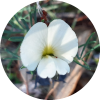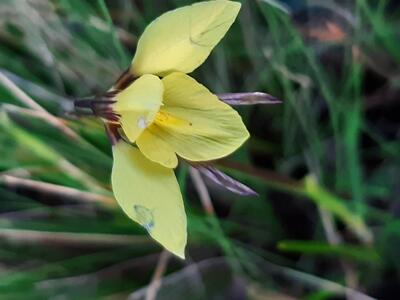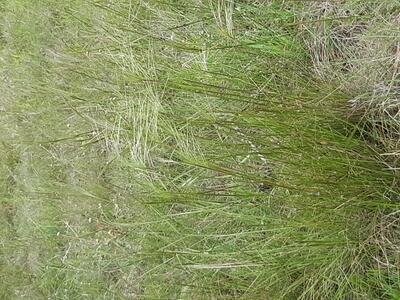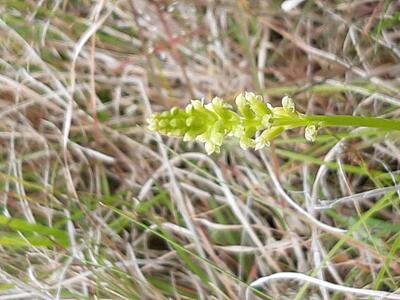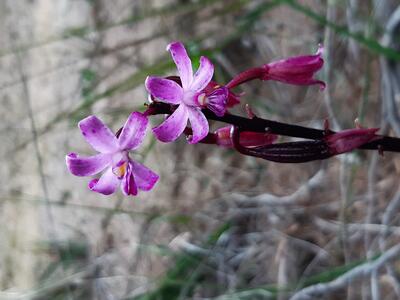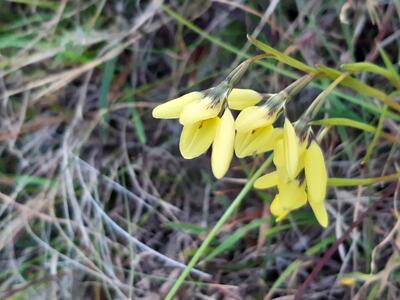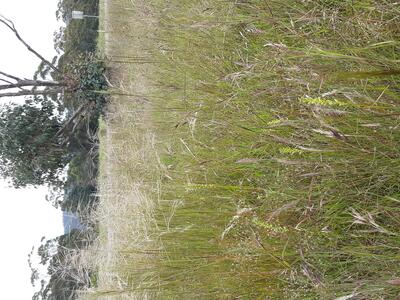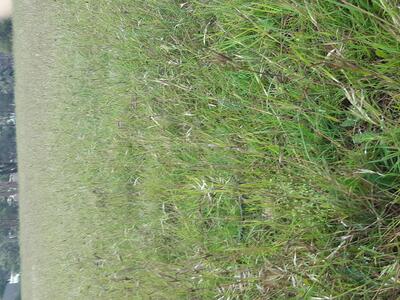Observations
by Rob Kelly, resident of Triabunna.
Birds of Triabunna
Triabunna is a town of small birds. The paucity of larger predatory birds such as magpies, currawongs and ravens may account for this. A very diverse number of small birds can be encountered once you get your eyes and ears tuned in. There is a changing pattern of species occurring during the different seasons and even when the weather changes.
A number of species of introduced birds such as sparrows, starlings, goldfinches and even kookaburras are well colonised here, but they do not seem to outnumber the variety of native species. Their presence is always evident as you wander around the town and through the bush reserves scattered close by the built up areas. To name a few; silvereyes, grey fantails, brown thornbills, eastern spinebills and even pardalotes can be sighted. Particularly striking are the dainty, chittering parties of superb fairy wrens that appear nearly every day in my backyard. They forage amongst the small shrubs, dance onto the lawn and peck away at almost invisible insects. Before you know it they have moved up onto the fence and out into the neighbouring properties.
A common sight, particularly when berries and fruits are ripening, are the small flocks of silvereyes with their faint calls. They are often accompanied by a few brown thornbills and sometimes a grey fantail will be vigorously shadowing their movements. The twists and turns and perpetual swinging motion of their tail is a delight to watch. They show no fear of humans, often seeming to come very close to check you out. The disturbance of insects in their wake attracts like minded small birds to flock together nearby in the quest for food.
The new Holland honeyeater is a regular visitor and particularly active in the summer months. Also unafraid of humans, they can be closely observed as they dart in and out of bushes and trees with loaded honey flowers, such as grevilleas, melaleucas and even introduced flowers such as agapanthus. Surprisingly, I have spotted a small flock of five new Holland honeyeaters excitedly feeding from the blue flowers of agapanthus regularly over a period of days. They may have been parents with their young offspring introducing them to a great food source (although a very weedy plant).
Introduced sparrows are very common around the town and can be seen in large numbers. Here is a bird whose numbers are declining in its native lands (Eurasia) and is also decreasing on mainland Australia and other countries where it has been introduced (North and South America). It certainly doesn’t seem to be the case in Tasmania.
A bit like the bumblebee, introduced to Tasmania in the 1990’s. Its presence is decreasing in large numbers in its native habitats in Canada but there seems to be plenty thriving in Tasmania. It is a common visitor to large flowers such as the agapanthus as well.
Another beautiful honeyeater I have noticed in Triabunna is the yellow throated honeyeater. Not common but sighted occasionally, as is the spotted pardalote in small numbers around treed areas. A whole range of other species of birds also frequent the townships environs before counting the myriad of coastal and waterbirds that are permanent residents or visitors.
The range of medium sized birds includes magpies (small numbers), galahs, ravens, butcher birds, brush wattlebirds, noisy miners, green rosellas, blackbirds, kookaburras (both introduced) and large flocks of musk lorikeets in the summer months. Even the odd bronze-wing pigeon can be seen wandering around the Dead Island walking track.
A special treat occurred recently when I came across a flock of wood swallows in an old pine tree near St Mary’s church in Franklin Street. Their muffled calls and fluttering behaviour is unique to watch as they never seem to be able to keep still. Their tails also continually flick from side to side. A number of wood swallows frequently hang about the trees lining the Tasman Highway oval, a good location to sight a variety of small native birds.
The ever present welcome swallows are always flying about and can be overlooked until they swoop close by. Their gyrations are difficult to follow but the grace and speed of these hyperactive, satiny looking birds are remarkable. Often close to water they can always be found around the edges of the bay, but can also be seen in the open spaces of town, diving and weaving endlessly in their pursuit of insects.
A few larger birds that frequent Triabunna are the small flocks of the beautiful, languid, yellow tailed black cockatoos as they fly over, filling the air with their wailing, high pitched cries. The old pine trees planted many years past are their favourite places to tear into the pine cones for seeds. The presence of torn cones lying about the trunk of these trees is evidence of the cockatoo’s visits. The huge shape of a soaring sea eagle can sometimes be spotted crossing the township, if you are lucky. This happening can be accompanied by smaller birds harassing the eagle as it disturbs their peace of mind.
The coastal and water birds around Triabunna are a very appealing feature of daily life. Seagulls call from overhead as they circle the town and can be found at many different waterside spots, especially where humans are having their outdoor meals. The big kelp gulls are ever present, regularly seen perched on lamp posts and around the piers, quietly surveying the scene. Their guttural calls can sometimes be heard as they wheel around Dead Island before they roost for the night.
The pied oyster catchers have a constant presence fossicking for food amongst the rocks and muddy surrounds of Dead Island Sanctuary. They even venture into the town precincts to be to be seen either in pairs or larger numbers in the paddocks and recreational areas. Watching a pied oyster catcher feeding in amongst the rocks reveals their amazing ability to use their long, strong beaks to pry up a shellfish or worm and quickly despatch it down their throats.
Swans can often be seen floating around the shallower parts of Spring Bay near the township, and regularly at Pelican Point, with the odd pelican appearing there and around Dead Island from time to time. The elegant great white egret also pays visits to the low tide waters around Dead Island with that other graceful big bird, the white faced heron. The best time to see them is of an evening when they are catching their last meals before roosting.
A colony of little pied cormorants, with a mix of little black cormorants, seem to be fairly permanent residents of the Dead island precincts. They roost every evening on the mud bars or on the submerged tree trunks when the tide is high. It is their home base. Fishing must be good in the Triabunna waters.
A bird that also thrives around the edges of the Bay and in the streets and parklands of Triabunna is the ubiquitous masked lapwing. Their loud alarm calls can be heard far away and pairs or small family groups can be encountered all around town. They like to be near water but are often out in the grasslands keeping an eye on all the activities going on around the neighbourhood. During spring, young chicks are fiercely guarded by the parents with dive bombing tactics part of their arsenal. They brook no nonsense and are very successful breeders.
Last but not least, crested terns also seem to like the waters for fishing around Triabunna and can be seen diving for their supper at different times around the Bay. Their streamlined bodies suddenly dropping like white darts into the waves and surfacing with a small fish in their beak is a sight to behold.
I am sure there are still some more interesting birds to be discovered. Fortunately there are no Indian mynas, Indian turtledoves and even large numbers of noisy miners to compete with the smaller birds (even though the noisy miners are a native species of honeyeater, they can become very competitive and aggressive in large numbers). However, there are ever growing large flocks of starlings and sparrows that congregate throughout the town that compete for food and nesting sites.
Flocking
A real treat presented itself one day in March this year. A flock of tiny little birds flew out from the silver birch in my backyard and went hopping along the lawn, catching insects in the grass. I counted eleven yellow-rumped thornbills in this flock, twittering away as they seemed to cover the ground in a kind of formation.
Shortly after, they were joined by six superb fairy wrens making a similar foray for insects amongst the grass. They were a bit more spasmodic and scattered apart in their feeding approach. Some of the wrens then descended upon the nearby bird bath and spent quite a lot of time enthusiastically splashing about in the water.
Since this visit, I have encountered flocks of the yellow-rumped thornbills regularly near the trees and bushes lining the Tasman Highway side of the Triabunna school oval. They descend from the foliage to feed on the grassy verge next to the highway and duck for cover back into the branches. They are often accompanied by a grey fantail close by and sometimes brown thornbills in the nearby bushes. This area of habitat is a perfect area for small birds to be constantly found in all seasons. Goldfinches and superb fairy wrens are common here and even two white fronted chats appeared on the oval for a short period of time last August.
Yellow-Tailed Black Cockatoos
As the sunny autumn day came to a close, the western sky full of colour as the sun disappeared below the horizon, the distinctive wails of yellow-tailed black cockatoos began to ring out. Groups of five to six birds flew over the Maclaines Estuary as they slowly flapped their way towards their pine tree roosts near the Tasman Highway. This was just the beginning as more and more groups of cockatoos kept flying over but twisting and turning in the air as if uncertain about their decision to roost. Some of the birds landed in nearby trees for a while and others seemed to be making a direct bee line for the pines. Their calls were filling the air with despondent and plaintive wails but they were no doubt sending messages of some sort.
I was transfixed on these low flying flocks as they scattered haphazardly about, not uniform like the starlings that swoop together as one. They were all over the place but small numbers of up to five or six in each group kept together. Overall I managed to count up to fifty birds as they cavorted about and eventually disappeared into the distance. Such large numbers of the yellow-tailed black cockatoos are not common during most times of the year around Triabunna, although they seem to always be present. I have notice large flocks flying through in past years as well and it only happens in the cooler months. Perhaps birds from other regions just gather together in this locality for some reason at this time of the year and food may be more abundant. Plenty of pine trees grow around the township and the cones are a strong attraction for the cockatoos. They are a wonderful sight to see at any time and look magnificent as they fly over so low to the ground in such large numbers.
Two weeks later, an even more spectacular event occurred over the skies of Triabunna. As evening approached the familiar cries of the yellow-tailed black cockatoos could be heard in the distance as I watched from the Dead Island Sanctuary walking track. I was astonished to see a flyover of many separate groups of these cockatoos loosely forming a much larger flock as they drifted elegantly towards their night time roosts. I hurriedly tried to count the birds in their different groups and calculate the birds two by two as they mingled. I managed to count up to sixty birds at least. There were certainly more than that as stragglers kept appearing. What a thrill to see so many of these majestic cockatoos so frequently in Triabunna skies. This flocking is a phenomena I would like to know more about and whether the removal of the local pines would have some impact on the large gatherings of these iconic Australian birds. It’s ironical that these giant old introduced weedy trees now provide food and shelter for these birds where their native habitat and food sources have been diminished.
Triabunna Orchids
It’s right in the township, and a surprising place to find orchids. A large vacant area of land surrounds the St Anne’s Church in Franklin Street, which is close to the edge of the Tasman Highway that skirts around Triabunna. I regularly walked my dog Snowy through this land and, as spring approached, a lot of wildflowers began to appear. I also knew this whole open area was the home of kangaroo and wallaby grasses. It had somehow escaped the spread of pasture grasses and weeds that predominate through most of the streets.
In September, I noticed small but very bright yellow flowers appearing, just a few at first, but their numbers gradually increasing. A close inspection revealed these delicate blooms were Golden Moth Orchids. They belong to the Diuris genus of orchids and are fairly common in the south eastern parts of Australia. Their numbers increased and these groups of yellow flower heads could be seen spreading across a good portion of this vacant land.
In amongst these orchids, many different wildflowers could be seen building up all around the place. To list a few that I could easily identify, I discovered sundews, bluebells, parrot peas, rice flowers and goodenias. The native grasses began to slowly get bigger and before their flower heads began to emerge, another two varieties of orchid could be seen in amongst the thick grasses. The flowers of Sun Orchids belonging to the Thelymitra genus, were rising above the vegetation and getting ready to open their blue blooms. The tall thin spikes of the Onion Orchid from the Microtis genus, were also scattered about with clusters of tiny green flowers along the stems. I had never come across these before and they certainly needed close inspection to reveal the orchid flowers.
Unfortunately, about this time when the land here was rich with orchids and native plants flowering profusely, a mower arrived to skim it all down to lawn level. However, good rains followed and the recovery of the grasses and wildflowers was rapid with several different species emerging; bright yellow everlastings and tiny white heath flowers. One last type of orchid made a brief appearance, the pinkish Parsons Band (Eriochilus genus). I could only find two plants in amongst the thick grass. Within a short time, a beautiful waving field of wallaby grasses and kangaroo grasses in full bloom surrounded the old church. It was a great sight watching the whole field softly swaying in the breezes and was a distinct contrast to the thick heads of the pasture grasses in the farmlands across the highway. As the grasses began to dry out in late summer, the Friends of Triabunna Reserves members began to collect seeds for the Triabunna Mill Botanical Gardens planting projects.
Photos by Rob Kelly
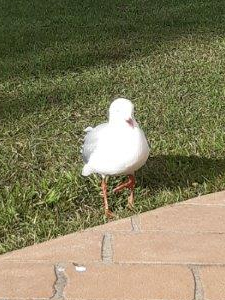 photo by Rob Kelly
photo by Rob Kelly
Pirate Seagull
Sitting with our backs to the Triabunna Mariners' Memorial, trying to escape the biting cold wind as we ate our lunch, we were visited by the resident seagulls. Most of them were keeping a respectable distance just waiting for a chip to drop, except for one which crept up closer. Suddenly, Steve notice it had a third foot that extended outwards from it's left leg. This bird is the famous three footed seagull that had been photographed in Triabunna by Dr Eric Woehler, Convenor of Birdlife Tasmania, well over six months ago. It is still around and is obviously part of the local flock. This forward bird stared us down for quite a while until we relented and threw out some chips. It was not slow about joining in the scrum for grabbing a chip and was successful several times. There is no doubt this extra foot does not seem to be a handicap!
